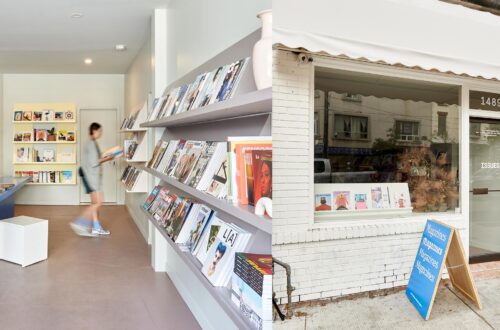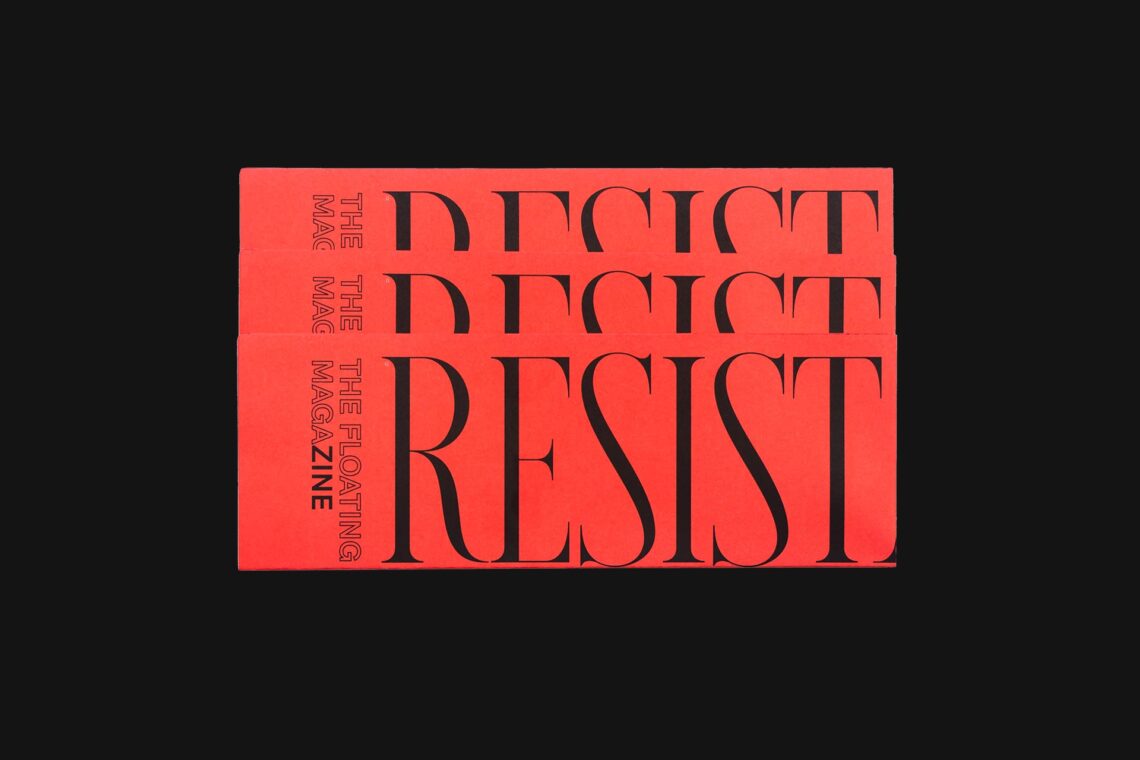
The Floating Magazine’s posterzine is an ode to activism and creativity for the greater good
Taking a well-established digital magazine and transporting it across to print is a journey not to be taken lightly – especially due to the fact that we’re currently going through a pandemic. However writer and publisher Payal Khandelwal has explored this transition in recent times – bringing their publication to a tangible and creative end result.
Payal is owner and publisher of The Floating Magazine (TFM), a digital magazine “featuring in-depth conversations with visual artists from around the world.” Having been a personal project for the past five years, Payal sought to transition a snippet of the digital content across to print, and it took a pandemic to make it happen, she tells Overleaf. “I had been wanting to do something in print right from the moment I started TFM,” Payal says. “However, lack of something or the other (funds/resources/bandwidth etc.) often stopped me. However, during the pandemic, I started getting these end of the world vibes and I thought ‘it’s now or never’.”
The result is a posterzine curated on the theme of ‘Resistance’, the same theme found within a series of conversations published on TFM’s digital platform in 2021. Featuring a range of excerpts from a diverse set of artists, TFM’s posterzine looks to extend the conversation into the tangible world of print. The zine meets architect, artist, and activist Sofia Karim, discussing the responsibility of artists to tackle real issues in the world around us. Sofia tells TFM, “I feel that to not fight with everything that one’s got, to not use that cosmic gift that one has been granted as an artist, and to think that things will change by themselves in this world – for me, that’s the way to forsake beauty, mysticism, poetry, and love, and to live in darkness.” Artist and journalist Molly Crabapple also discusses the idea of tackling these critical issues through 4 pieces of advice noted in the zine. She writes, “fight not just for the rights of people far away [but] also for their own communities and for themselves.”
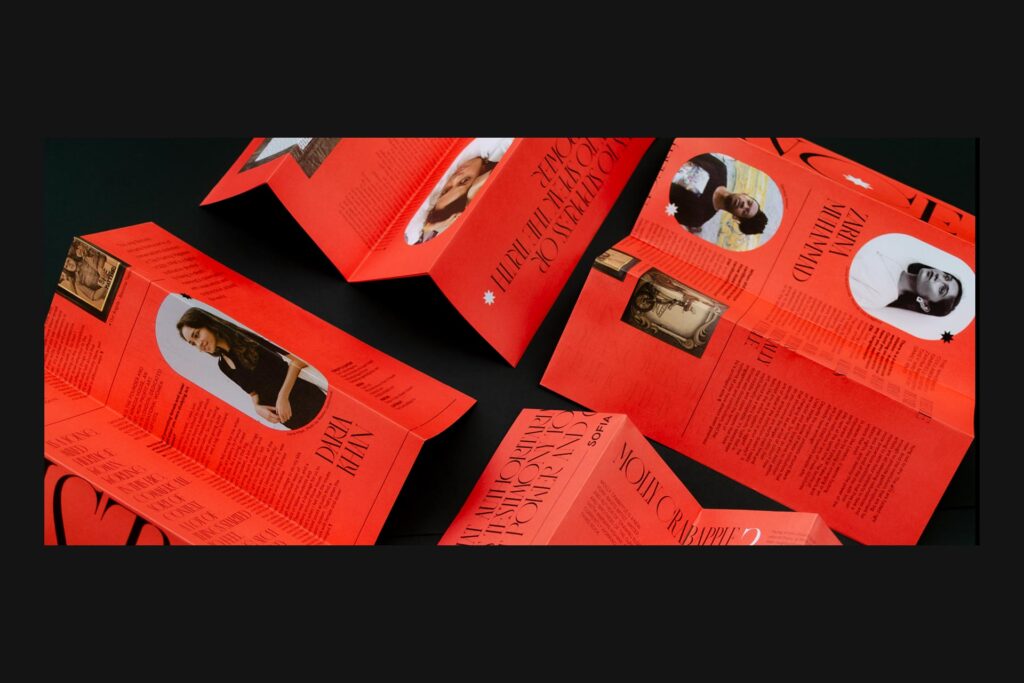
Designed by Studio Kohl, TFM’s Resistance zine derives its message from protest, activism, creativity and insight into not only the lives of the artists, but also their take on approaching critical issues. Large serif typography adorns the front, opening fold – cutting the word ‘Resistance’ into two parts – ‘Resist’ in uppercase characters sitting prominently in black on the strong red. It’s a striking full scale piece of type that pulls on the strings of the reader – can we ‘resist’ reading on ourselves? Split into a 4-part fold system totaling an 8 section grid, readers are invited to the conversation through windows into the artists’ profiles – ovals leading into the image of the people. Pull quotes are also designed in the same serif font seen on the front cover, adding a charming tone of voice through its decorative style. Shapes including stars add highlights to the content whilst a clean sans-serif navigates the content softly and trusting. Each artist has their own space to shine within the folds, including artist Dáreece J. Walker, art critic and co-founder of The White Pube – Zarina Muhammad, and curator and founder of the London-based gallery Mimosa House – Daria Khan. All of which seek to discuss everything from elitism in art (Zarina), their working practice and material impact (Dáreece) but also a life journey with a plight to highlight women and queer artists (Daria).
Overleaf recently interviewed Payal about the TFM posterzine. You can read the full interview below.
First of all, congratulations on the posterzine! How has it been received so far?
Thank you so much, Stuart. While we have been a bit slow in sending it out into the world, the reception – from wherever it has found its way – has been pretty good. And we do get to hear ‘wish there was more to read!’ often. 🙂
With so many diverse opinions – over 100 conversations and counting for your project, how do you find your contributors?
We just do a crazy amount of research to be honest :). In the beginning, I was very conscious of choosing only upcoming artists from very specific regions which often don’t find a place in western and mainstream media. Over the years though, we have started seeing the world as a much more fluid space and therefore, have been featuring both upcoming and established artists from all across the world. What we now focus on is in-depth conversations and featuring artists/gallerists/curators who are doing meaningful work.
"I had been wanting to do something in print right from the moment I started TFM. However, lack of something or the other (funds/resources/bandwidth etc.) often stopped me. However, during the pandemic, I started getting these end of the world vibes and I thought ‘it’s now or never’."
Payal Khandelwal, ‘The Floating Magazine’ Founder and Publisher
With over 20 countries so far, the conversation is spreading far and wide. Has it been interesting to meet so many people from different backgrounds?
Yes, for sure. Personally, The Floating Magazine (TFM) has been a massive source of inspiration and an experimental playground for me. Each and every time I have spoken to an artist – mostly through video calls – it reinstates my belief as to why TFM exists. Getting to know these artists, and learning more about their lives, cultures and countries has really helped me evolve both as a journalist and as a person. It gives me so many perspectives and ideas.
Setting out to bring the digital across to print – how did you approach it? Was the idea for it to be a posterzine from the start of the experiment? Or, were there multiple mediums that were being discussed?
I had been wanting to do something in print right from the moment I started TFM. However, lack of something or the other (funds/resources/bandwidth etc.) often stopped me. However, during the pandemic, I started getting these end of the world vibes and I thought ‘it’s now or never’. I just wanted TFM to be out in the world in a very tangible way, and creating a zine felt like the best way to do it as it was logistically and financially more feasible.
And I always knew that I wanted to collaborate with my friend Mira Malhotra, founder of Studio Kohl, for this. So I showed her the content and she was instantly bursting with such cool ideas for the zine. The posterzine was her idea.
The theme for the zine was ‘Resistance’ – was this a theme chosen by you and the team or one that emerged from the pieces?
Actually, we did a theme for the first time for our online conversations in 2021 – Resistance. We spoke with artists/curators/art writers who are doing radical work and challenging the norm in their own specific ways. So the theme traveled from the digital publication to the print zine quite seamlessly.
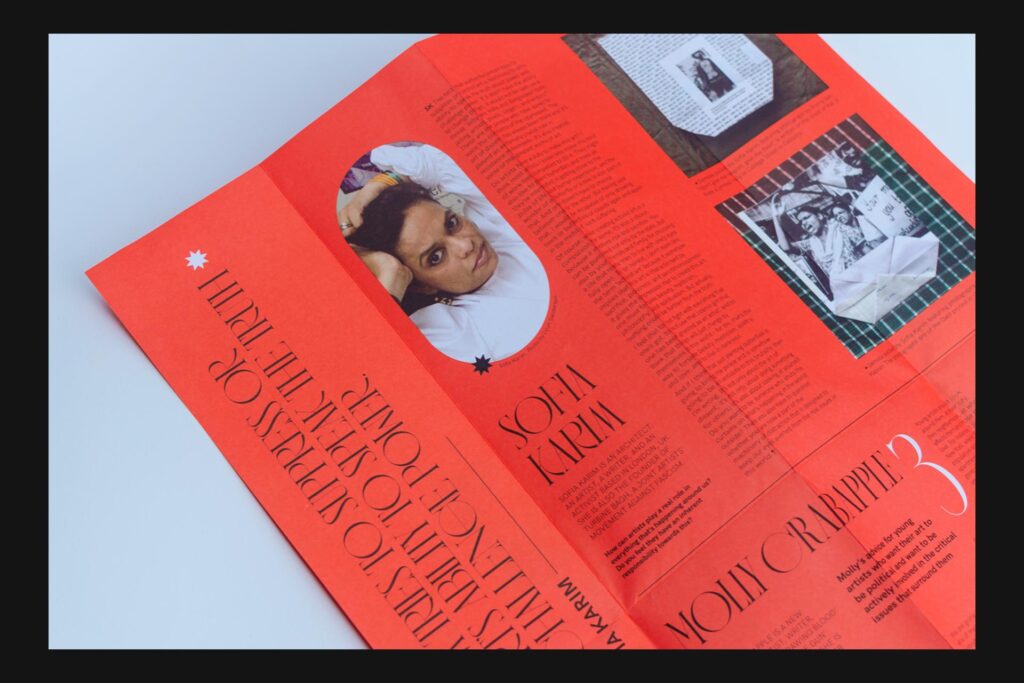
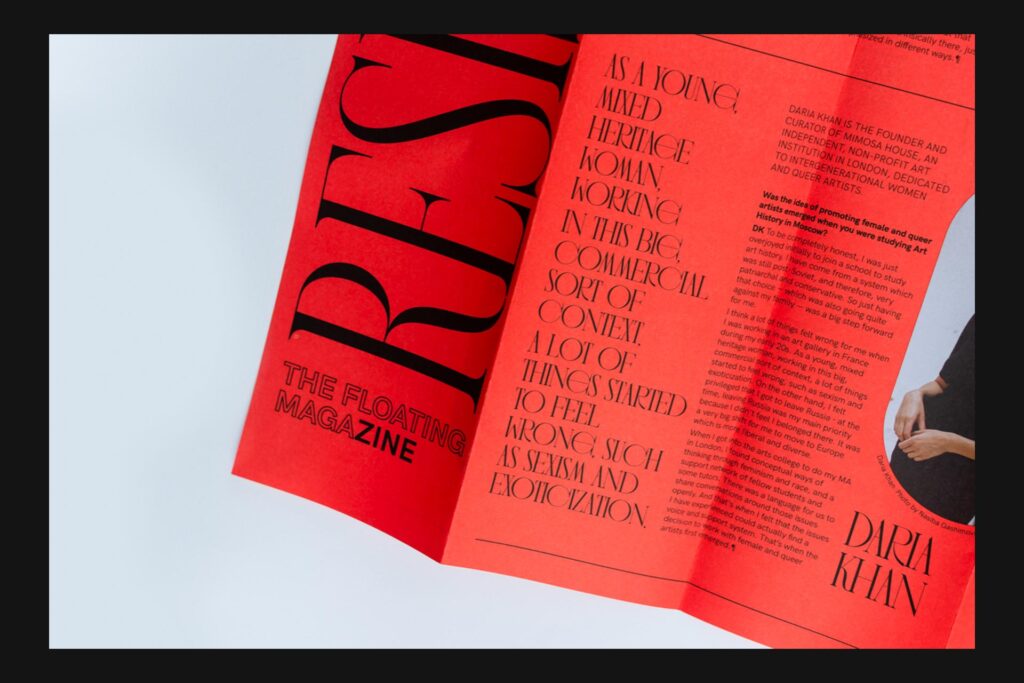
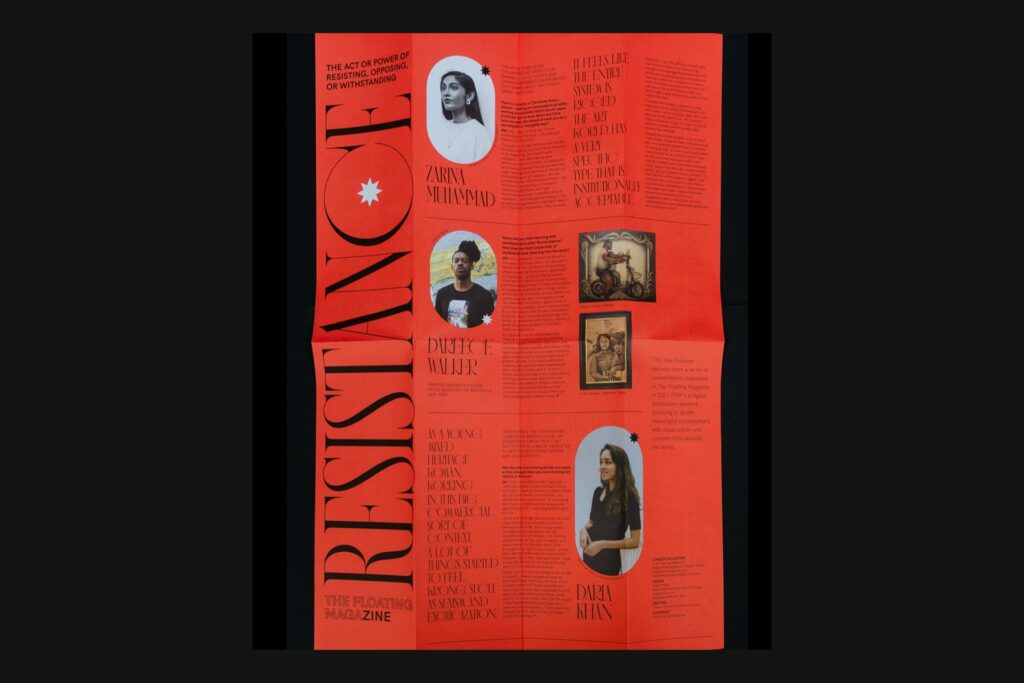
Overleaf email newsletter - subscribe for free today!
Get indie magazine news, reviews and events direct to your inbox! Simply sign up below and you’ll be the first to hear about new articles, podcast episodes and loads more.
The curation and discourse in the zine relate to the current situation in the visual arts. It discusses the notion that the arts still aren’t as accessible as we’d like it to be – would that be a true statement?
Absolutely! I am quite averse to the esoteric and pedantic approach to visual arts. I genuinely believe that visual arts can do a lot more and bring about way more changes in the world if it becomes more accessible.
Do you think there is an easy fix?
There’s no easy fix, unfortunately. However, it’s beginning to happen. With artists now reaching out to their audiences directly through social media and even taking them behind the scenes, visual arts is slowly becoming more democratic. There are quite a few art galleries and curators that have emerged around the world who are focusing on artists who often wouldn’t find a space within a traditional gallery set-up. Even within art writing/art criticism, there are so many fresh, accessible voices now that cut through the bullsh*t (‘The White Pube’ is such a fantastic example).
Creating a platform for thought-provoking is something that The Floating Magazine has brought for 5 years now. How did it all begin?
It started as a personal project to feed my own curiosities. Out of the assignments I was doing as a freelance journalist that year, the ones that appealed to me the most were where I got to do these in-depth conversations with visual artists which focused on them as a person too rather than just the art. I felt I needed more freedom and an exclusive space to continue doing this kind of work. And as I explored the idea further, I realized that visual arts and communications from Asia and Middle East are still grossly underrepresented in the global media, and when they are, it’s often with a tinge of exoticism and preconceived notions. So TFM started initially as a platform for visual artists from these two regions and as a space where I could have unfiltered conversations.
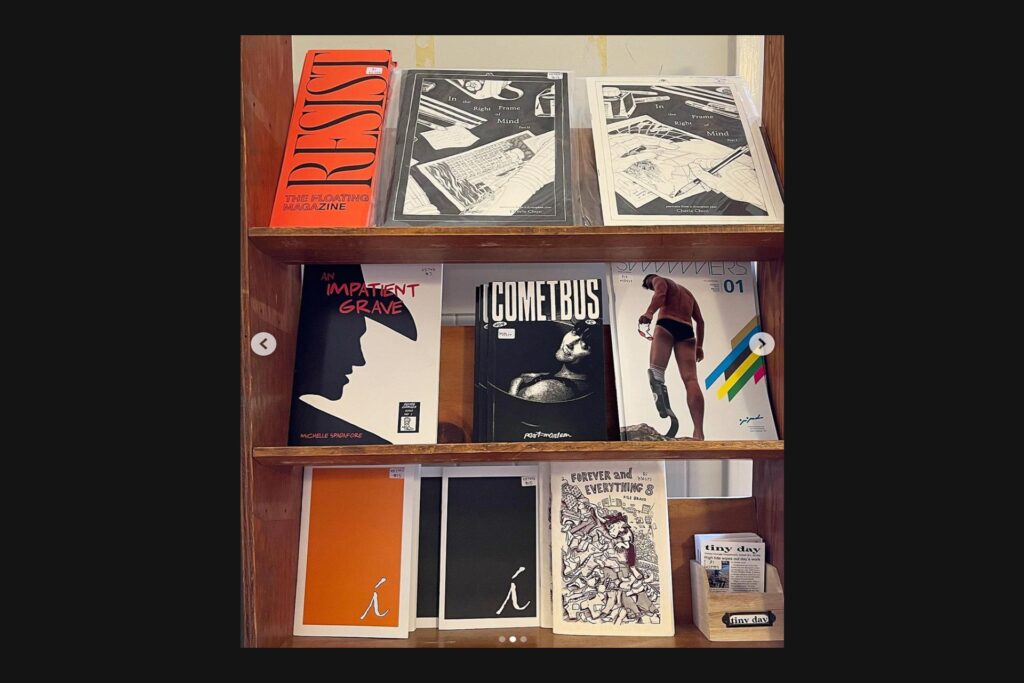
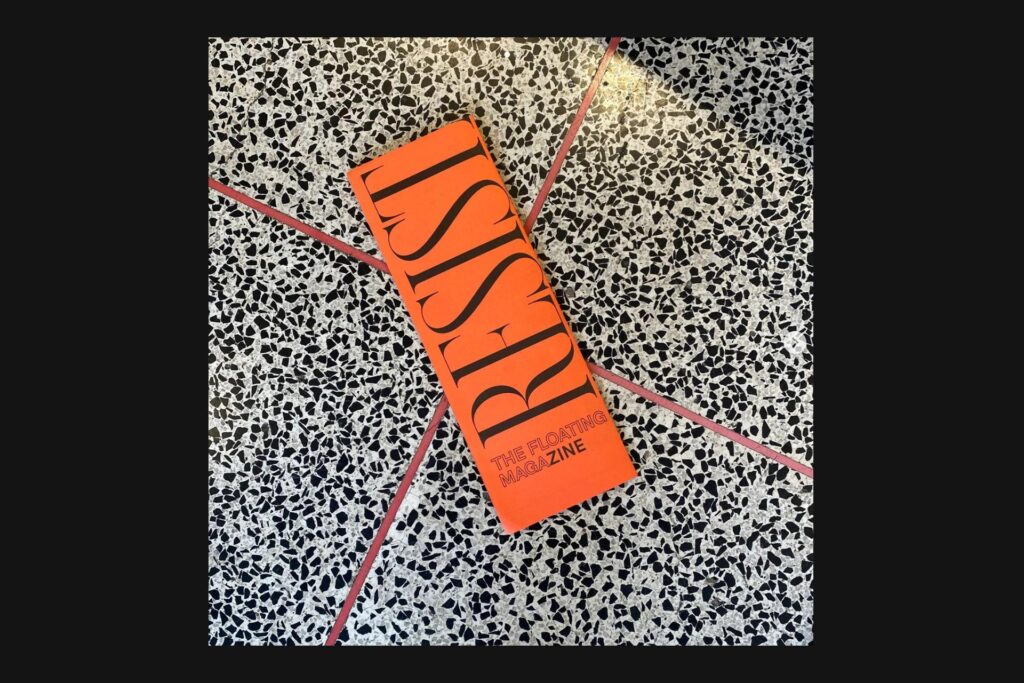
Where would you like TFM to be in another 5 years?
I have never done much future planning when it comes to TFM. Its evolution has been pretty organic and I would like to continue that way. Having said that, we definitely want to conduct more experiments – in both online and print space. And we hope that TFM reaches more people in the world.
The zine was designed by Studio Kohl, how did you become connected?
I have known Mira, who runs Studio Kohl, for the last 5-6 years now I think – first as a journalist and then as a friend. We have collaborated on some other projects as well. I really love and respect her work – it’s so original and fierce! Her ‘Unfolding the Saree’ zine still remains my favorite zine ever.
The zine is printed on striking red paper and is adorned with large typographic headlines – do you feel this creative direction has given the theme further impact?
Yes, it really made the content stand out.
It was all Mira! She felt that red would be the perfect colour to represent ‘Resistance’ and the font was her call too. When I saw everything together in the dummy version, it was love at first sight. Everything looked so sharp and powerful. The design did complete justice to the inspiring words and work of these artists and curators.
Will there be further print experiments in the future?
For sure. We will release the next zine sometime next year. Mira and I are already discussing it.
Where can potential contributors find you?
Please reach out to me at thefloatingmagazine@gmail.com.
Where to buy
Here are the stockist websites for this magazine title. These may include social media links only.
India – Paper Planes
San Francisco – City Lights Bookstore
London – magCulture
Elsewhere: Email thefloatingmagazine@gmail.com
Correct at time of writing.

Enjoying Overleaf?


You May Also Like
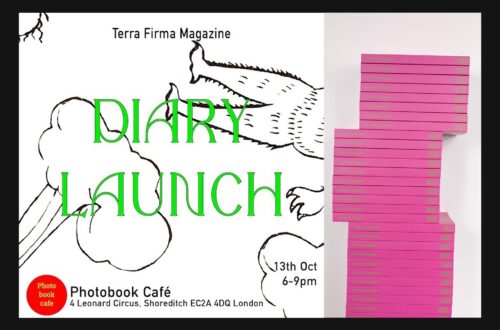
Terra Firma magazine set to launch 2023 diary at London event
October 12, 2022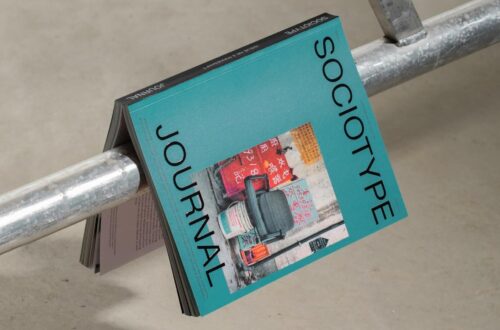
Sociotype Journal issue two blends typographic design with stories of human ingenuity
January 11, 2024